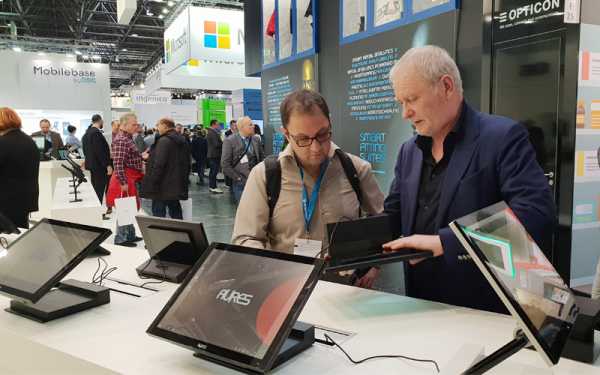By Caitlin Guilfoyle, AURES UK Account Manager
Thanks to the marvels of modern technology, businesses have more choice than ever before when it comes to point of sale equipment for their premises.
You can have a powerful all-in-one terminal complete with a high-performance CPU and touchscreen, capable of running the very latest EPOS and business management software, integrating with your network and providing a handy user interface for your staff. Or, you can build a similar system from scratch using separate displays, processors or panels PCs.
You can take your point of sale to the customer with mobile devices, or you can hand over control with a self-service kiosk.
The question is, which type of EPOS system is right for your business? Let’s take a run through the key features and benefits of each.
All-in-one terminals
All-in-one EPOS hardware gives you everything you need from a point of sale terminal in a single unit – a computer processor, a screen, space and connection ports to add peripherals like cash drawers, card readers, printers and additional customer-facing screens. The name ‘all-in-one’ comes from the time when the first electronic/digital POS systems were made up of lots of different parts – maybe an old-style till unit plugged into a PC, with separate screens, keyboards, a mouse etc. The idea of an all-in-one terminal is therefore that it is a complete, purpose-built EPOS unit that gives you everything you need in one convenient product.
AURES all-in-one terminals are renowned for being tough and durable, custom designed to withstand the hours of use an EPOS unit goes through in a busy retail or hospitality environment. But they are also compact and flexible, saving space on work surfaces and capable of being mounted and used in lots of different ways, whether flat on a desk or mounted on a wall or pole. They are aesthetically pleasing, with ergonomic, tasteful designs that fit in with your environment, and thanks to the touchscreen interface are easy and intuitive to use. In short, an all-in-one EPOS terminal is your standard 21st century solution, a genuine all-rounder and a reliable, robust, stylish option for most environments.
Modular EPOS
Sometimes off-the-shelf solutions just don’t quite meet the needs of your business. So as convenient and successful as all-in-one terminals are in most circumstances, in some situations you might want something that can be customised a little more to your own purposes. Modular EPOS comprises all the same things you find in terminals – processing units, screens, peripherals – but each one is added separately. For example, you might want to run several display screens from the same PC to save space, or you might want to use panels PC options – integrated touchscreens and processors – which provide even more flexibility in terms of how and where you can mount terminals.
Mobile POS
Mobile POS, or M-POS, is a great solution for the modern business that likes to get out and about to engage with its customers. While it is possible to install EPOS software on normal tablets, custom-built M-POS devices have the added benefits of having integrated card readers, processing capabilities tailored to the requirements of advanced EPOS and business management applications, enhanced connectivity and tough construction – just what you need if you are plying a trade on the move or in the great outdoors. Far more than just a mobile payment solution, M-POS delivers all the advantages of a complete EPOS system to pop-up stalls and mobile businesses, including advanced data capture, stock control integration and customer service options, such as looking up products or arranging delivery. It is also a great option in store as a way to empower staff to complete sales there and then as they provide service – often the best moment to convert – and also as a queue-busting solution at busy times when you could do with more POS points.
Self-service kiosks
Finally, kiosks are one of the hottest trends in EPOS right now, with their popularity growing in everything from quick service restaurants to grocery, ticketing operations for the leisure trade to high street retail. The concept behind a kiosk is simple – let the customer complete the transaction themselves. With the growth of digital commerce, most people are very familiar with doing this and the concept that you need a sales assistant to process a sale has gone out of the window. Self-service kiosks typically comprise a processing unit, a large, user-friendly touchscreen, an integrated card reader, printer and perhaps facilities for cash payments. Because they are intended for use by anyone, not just staff who are trained in how to use them without causing undue wear and tear, kiosks have to be tough as well as user-friendly and appealing.




